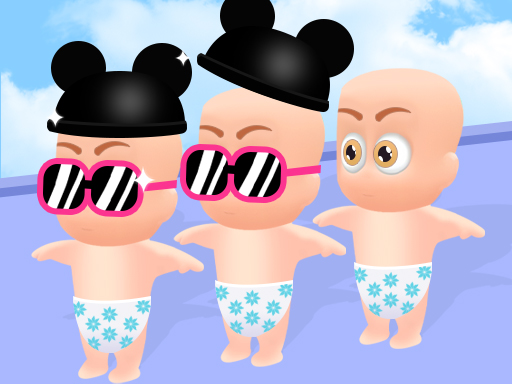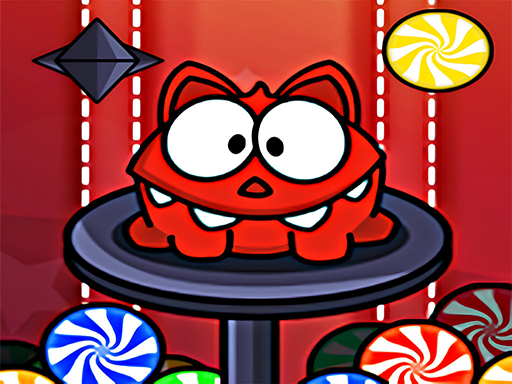Perfect Fill
About Perfect Fill
You know that feeling, right? That absolute rush when you stumble upon a game, maybe one you weren’t even looking for, and it just *clicks*? It’s like finding a hidden gem in a massive, sprawling digital landscape. You play it for a few minutes, then an hour, then suddenly the sun’s gone down and you’ve forgotten to eat, all because this little, unassuming title has completely pulled you in. That’s exactly what happened to me with Perfect Fill, and honestly, I haven’t been this genuinely excited about a hypercasual game in ages.
I mean, I’ve always been drawn to games that manage to pack a surprising amount of depth into a simple premise. There’s something magical about a game that doesn’t demand hours of commitment or a steep learning curve, but still manages to challenge your brain and give you that incredibly satisfying feeling of accomplishment. And Perfect Fill? It absolutely nails it.
So, the backstory here is kind of cool. You might remember a game called Physical Maze, which was already a pretty neat little puzzler. Well, Perfect Fill is its successor, and they’ve taken everything that was good about the original and just, well, perfected it. Seriously, from the moment you boot it up, you can tell there’s been a significant upgrade. The graphics, for starters, are so much cleaner and more vibrant. It’s not about hyper-realism, obviously, but everything just pops. The colors are crisp, the animations are smooth, and the whole aesthetic is just incredibly pleasing to look at. And the sounds? Oh man, the sound design is subtle but so effective. Every block placement, every successful fill, every little bounce and slide has this incredibly satisfying auditory feedback that just makes the whole experience feel more tactile, more *real*, even though it’s all happening on a screen. It’s those little touches, you know, that really elevate a game from good to great.
What I love about games like this is how they trick you. You start playing, and the first few levels are deceptively simple. You’re presented with an empty shape, and a bunch of blocks that need to fill it. Your job is to drop these blocks, guiding them with a swipe, making sure they land perfectly to fill every single void. It sounds easy, right? And it is, at first. You get this immediate gratification, this little burst of dopamine every time you complete a level. But then, almost without you noticing, the game starts to evolve.
The levels have almost doubled in number, which is just insane for a game like this, and you can really feel that progression. It’s not just more levels; it’s a whole new world of complexity that slowly unfolds. The brilliant thing about this is that it never feels overwhelming. Each new challenge builds on the last, subtly introducing new mechanics and obstacles that force you to rethink your approach.
And that’s where the real magic happens. Suddenly, those empty shapes aren’t so empty anymore. They’re dotted with static barriers, moving platforms, and all sorts of tricky elements that you need to avoid. You can almost feel the tension in your shoulders as you line up a drop, knowing that one wrong move, one tiny miscalculation, and your perfectly aligned block will bounce off an obstacle and land in the wrong spot, messing up your entire plan. That’s the "avoiding obstacles" part, and it’s implemented so cleverly. It’s not about speed, not about frantic tapping; it’s about precision, foresight, and a touch of spatial genius.
The levels have definitely become more difficult, and honestly, that’s exactly what I wanted. I mean, there’s nothing worse than a puzzle game that never really pushes you. Perfect Fill, however, absolutely delights in making you scratch your head. You’ll find yourself staring at the screen, rotating the level in your mind, trying to visualize how each block will fall, how it will interact with the environment, and where it will finally settle. This is where the "physical model" really shines. It’s not just some abstract concept; it’s a tangible, observable force that dictates how your blocks behave. They bounce, they slide, they tumble with a surprising amount of realism. It’s sophisticated, yes, but in a way that feels intuitive rather than frustrating. You learn to anticipate the physics, to use them to your advantage, even to exploit them for those truly ingenious solutions.
There are moments when you’re stuck on a particularly gnarly level, and you’ve tried every permutation you can think of. You’re about to give up, maybe even throw your phone across the room (just kidding, mostly), and then, suddenly, it clicks. That “aha!” moment, that flash of insight where you see the solution that was hiding in plain sight all along. Maybe you realize you need to drop a smaller block first to create a temporary platform for a larger one, or perhaps you need to use the momentum of a falling block to nudge another into place. That’s the kind of satisfaction that makes gaming so rewarding, isn’t it? That feeling of genuine intellectual triumph. And Perfect Fill delivers that in spades. It genuinely develops your spatial thinking, but it does it in such an engaging way that you don’t even realize you’re exercising your brain. You’re just having fun.
The progression system is another thing that keeps you hooked. As you complete levels, you get rewards, which in turn unlock new levels and sometimes even new visual themes or block styles. It’s a simple loop, but it’s incredibly effective. You always feel like you’re working towards something, always chasing that next unlock, that next challenge. It’s that classic "just one more level" syndrome that can turn a quick five-minute break into an hour-long deep dive.
In my experience, the best moments come when you get into that flow state. You’re not consciously thinking anymore; you’re just reacting, anticipating, and executing. Your fingers are swiping, the blocks are falling, and the shapes are filling with a rhythm that feels almost meditative. You can almost hear the soft *thunk* as the last block settles into place, the little chime of victory, and then the screen clears, presenting you with a fresh, new puzzle. It’s a cycle of challenge, focus, and reward that is incredibly compelling.
What’s fascinating is how a game so seemingly simple can evoke such a range of emotions. There’s the initial curiosity, the frustration when you mess up a perfect run, the sheer joy of nailing a complex sequence, and that quiet satisfaction of seeing a perfectly filled shape. It’s a testament to clever game design when a hypercasual title can make you feel all of that. It’s not just a time-killer; it’s a genuine brain-teaser that respects your intelligence and rewards your patience.
Seriously, if you’re looking for something that’s easy to pick up but hard to put down, something that will challenge your mind without demanding a huge time investment, you’ve absolutely got to check out Perfect Fill. It’s the kind of game that reminds me why I love gaming in the first place – those moments of pure, unadulterated fun and the satisfaction of overcoming a clever challenge. It’s genuinely a fantastic discovery, and I can’t recommend it enough. Just wait until you encounter some of those later levels; the real magic happens when you realize just how ingenious some of the puzzle designs are. You’ll be hooked, I promise.
I mean, I’ve always been drawn to games that manage to pack a surprising amount of depth into a simple premise. There’s something magical about a game that doesn’t demand hours of commitment or a steep learning curve, but still manages to challenge your brain and give you that incredibly satisfying feeling of accomplishment. And Perfect Fill? It absolutely nails it.
So, the backstory here is kind of cool. You might remember a game called Physical Maze, which was already a pretty neat little puzzler. Well, Perfect Fill is its successor, and they’ve taken everything that was good about the original and just, well, perfected it. Seriously, from the moment you boot it up, you can tell there’s been a significant upgrade. The graphics, for starters, are so much cleaner and more vibrant. It’s not about hyper-realism, obviously, but everything just pops. The colors are crisp, the animations are smooth, and the whole aesthetic is just incredibly pleasing to look at. And the sounds? Oh man, the sound design is subtle but so effective. Every block placement, every successful fill, every little bounce and slide has this incredibly satisfying auditory feedback that just makes the whole experience feel more tactile, more *real*, even though it’s all happening on a screen. It’s those little touches, you know, that really elevate a game from good to great.
What I love about games like this is how they trick you. You start playing, and the first few levels are deceptively simple. You’re presented with an empty shape, and a bunch of blocks that need to fill it. Your job is to drop these blocks, guiding them with a swipe, making sure they land perfectly to fill every single void. It sounds easy, right? And it is, at first. You get this immediate gratification, this little burst of dopamine every time you complete a level. But then, almost without you noticing, the game starts to evolve.
The levels have almost doubled in number, which is just insane for a game like this, and you can really feel that progression. It’s not just more levels; it’s a whole new world of complexity that slowly unfolds. The brilliant thing about this is that it never feels overwhelming. Each new challenge builds on the last, subtly introducing new mechanics and obstacles that force you to rethink your approach.
And that’s where the real magic happens. Suddenly, those empty shapes aren’t so empty anymore. They’re dotted with static barriers, moving platforms, and all sorts of tricky elements that you need to avoid. You can almost feel the tension in your shoulders as you line up a drop, knowing that one wrong move, one tiny miscalculation, and your perfectly aligned block will bounce off an obstacle and land in the wrong spot, messing up your entire plan. That’s the "avoiding obstacles" part, and it’s implemented so cleverly. It’s not about speed, not about frantic tapping; it’s about precision, foresight, and a touch of spatial genius.
The levels have definitely become more difficult, and honestly, that’s exactly what I wanted. I mean, there’s nothing worse than a puzzle game that never really pushes you. Perfect Fill, however, absolutely delights in making you scratch your head. You’ll find yourself staring at the screen, rotating the level in your mind, trying to visualize how each block will fall, how it will interact with the environment, and where it will finally settle. This is where the "physical model" really shines. It’s not just some abstract concept; it’s a tangible, observable force that dictates how your blocks behave. They bounce, they slide, they tumble with a surprising amount of realism. It’s sophisticated, yes, but in a way that feels intuitive rather than frustrating. You learn to anticipate the physics, to use them to your advantage, even to exploit them for those truly ingenious solutions.
There are moments when you’re stuck on a particularly gnarly level, and you’ve tried every permutation you can think of. You’re about to give up, maybe even throw your phone across the room (just kidding, mostly), and then, suddenly, it clicks. That “aha!” moment, that flash of insight where you see the solution that was hiding in plain sight all along. Maybe you realize you need to drop a smaller block first to create a temporary platform for a larger one, or perhaps you need to use the momentum of a falling block to nudge another into place. That’s the kind of satisfaction that makes gaming so rewarding, isn’t it? That feeling of genuine intellectual triumph. And Perfect Fill delivers that in spades. It genuinely develops your spatial thinking, but it does it in such an engaging way that you don’t even realize you’re exercising your brain. You’re just having fun.
The progression system is another thing that keeps you hooked. As you complete levels, you get rewards, which in turn unlock new levels and sometimes even new visual themes or block styles. It’s a simple loop, but it’s incredibly effective. You always feel like you’re working towards something, always chasing that next unlock, that next challenge. It’s that classic "just one more level" syndrome that can turn a quick five-minute break into an hour-long deep dive.
In my experience, the best moments come when you get into that flow state. You’re not consciously thinking anymore; you’re just reacting, anticipating, and executing. Your fingers are swiping, the blocks are falling, and the shapes are filling with a rhythm that feels almost meditative. You can almost hear the soft *thunk* as the last block settles into place, the little chime of victory, and then the screen clears, presenting you with a fresh, new puzzle. It’s a cycle of challenge, focus, and reward that is incredibly compelling.
What’s fascinating is how a game so seemingly simple can evoke such a range of emotions. There’s the initial curiosity, the frustration when you mess up a perfect run, the sheer joy of nailing a complex sequence, and that quiet satisfaction of seeing a perfectly filled shape. It’s a testament to clever game design when a hypercasual title can make you feel all of that. It’s not just a time-killer; it’s a genuine brain-teaser that respects your intelligence and rewards your patience.
Seriously, if you’re looking for something that’s easy to pick up but hard to put down, something that will challenge your mind without demanding a huge time investment, you’ve absolutely got to check out Perfect Fill. It’s the kind of game that reminds me why I love gaming in the first place – those moments of pure, unadulterated fun and the satisfaction of overcoming a clever challenge. It’s genuinely a fantastic discovery, and I can’t recommend it enough. Just wait until you encounter some of those later levels; the real magic happens when you realize just how ingenious some of the puzzle designs are. You’ll be hooked, I promise.
Enjoy playing Perfect Fill online for free on Midiablog games. This Arcade game offers amazing gameplay and stunning graphics. No downloads required, play directly in your browser!
How to Play
To play you will need a mouse or the screen of your smartphone Start completing the first level and discover a new physics model The game is made with an emphasis on developing your spatial thinking Therefore its not just entertainment its also a gr





Comments
This game is awesome! I love the graphics and gameplay.
One of the best games I've played recently. Highly recommended!